List the 7 levels of classification in the correct order
Kingdom, Phylum, Class, Order, Family, Genus, Species
Draw a food chain with 3 trophic levels from the food web below:
Green plant - Mouse - Owl
State the number of options given in a single branch of a dichotomous key?
Two
What does the word 'binomial' mean?
Two-part name
Come up to the screen and point to the
- Light source
- Eye piece
- Objective lense
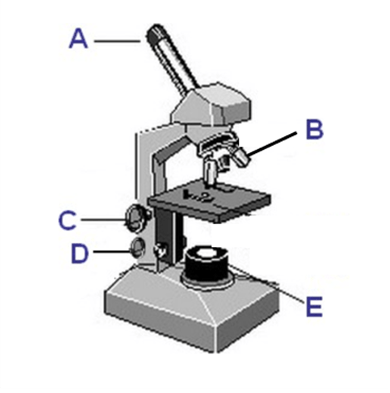
E
A
B
List the 7 characteristics of all living things
MRS GREN
Movement, Respiration, Sensitivity, Growth, Reproduction, Excretion, Nutrition
Identify the 2nd order consumer:

Frog
Explain the purpose of a dichotomous key
Allows users to identify/classify things
What is the purpose of binomial nomenclature?
A scientific way of naming organisms
A world wide communication tool
Describe the function of the coarse focusing wheel
To bring the specimen into approximate or near focus (ie. moves the stage up and down)
Give 1 reason why Taxonomists classify living organisms
Answers may vary:
To bring order to a collection of organisms
To develop a common understanding
To make comparisons based on observable characteristics
Explain the difference between an autotroph and a heterotroph
Autotrophs are known as producers because they are able to make their own food.
Heterotrophs are known as consumers because they consume producers or other consumers
There are important rules for choosing characteristics of objects when creating your own dichotomous key. Identify the most important rule from below:
1. Use characteristics that relate to behaviour
2. Use characteristics that relate to physical appearance
2. Use characteristics that relate to physical appearance
The scientific name of each organism has 2 parts. Which classification level does the first part of a organisms name come from?
Genus
It is important for living organisms to gather and respond to information about our environment in order to survive.
Which characteristic of all living things allows organisms to do this?
Sense
Select the level of classification in which organisms are the most similar:
(a) Kingdom
(b) Genus
(c) Order
(d) Species
Species
Explain where the 90% of the energy has been lost to between the 1st and 2nd trophic level below:

Lost as heat energy
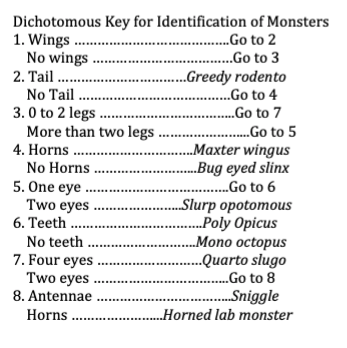
Identify the main difference between 'Sniggle' and 'Horned lab monster'
Sniggle has antennae
Horned lab monster has horns
The scientific name of each organism is two names: the genus AND the species. Explain how these are written.
Genus has a capital letter - species does not.
Both are in italics.
Draw Mary using the dichotomous key below
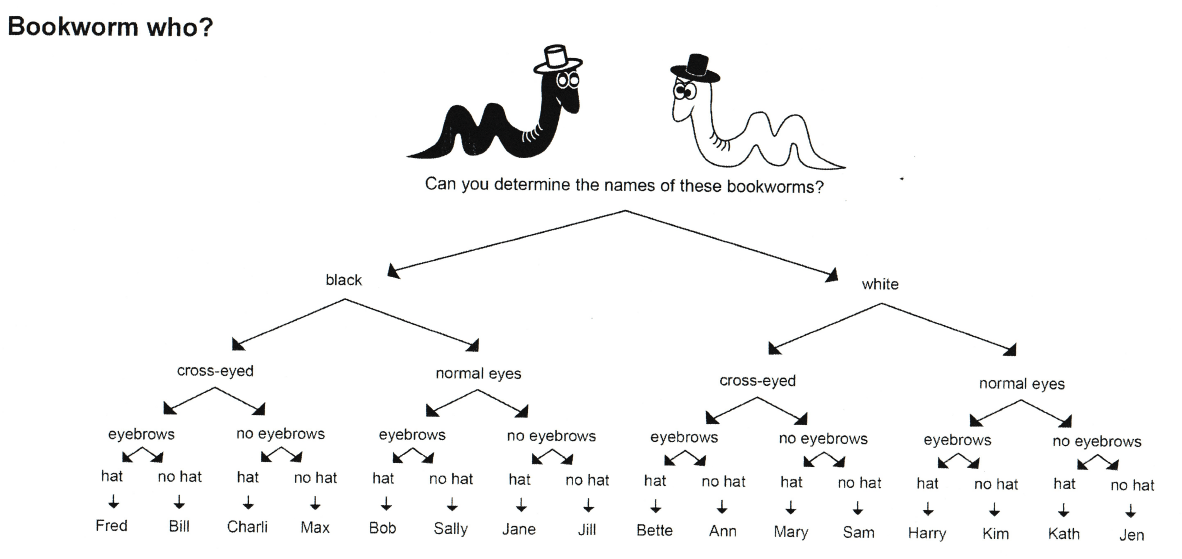
Hat
No eyebrows
Cross-eyed
White
What would be the main reason for the classification system to change
Answers may vary
New knowledge
New technology
New living organism discovered
Name the three symbiotic relationships shown by the diagram below (in order):
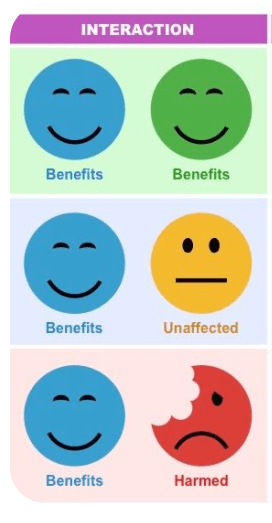
Mutualism
Commensalism
Parasitism
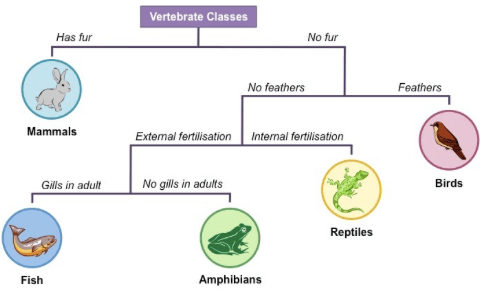
Using the dichotomous key above, describe the characteristics of birds
Vertebrate
No fur
Feathers
Identify which two plants are most closely related:
Rosa bland, Helianthus anomalus, Rosa Carolina, Bellis perennis
Rosa bland and Rosa carolina
*** They belong to the same Genus
1. Define abiotic factor
2. Give an example of an abiotic factor
3. Explain how an animal might interact with this abiotic factor
Answers will vary
